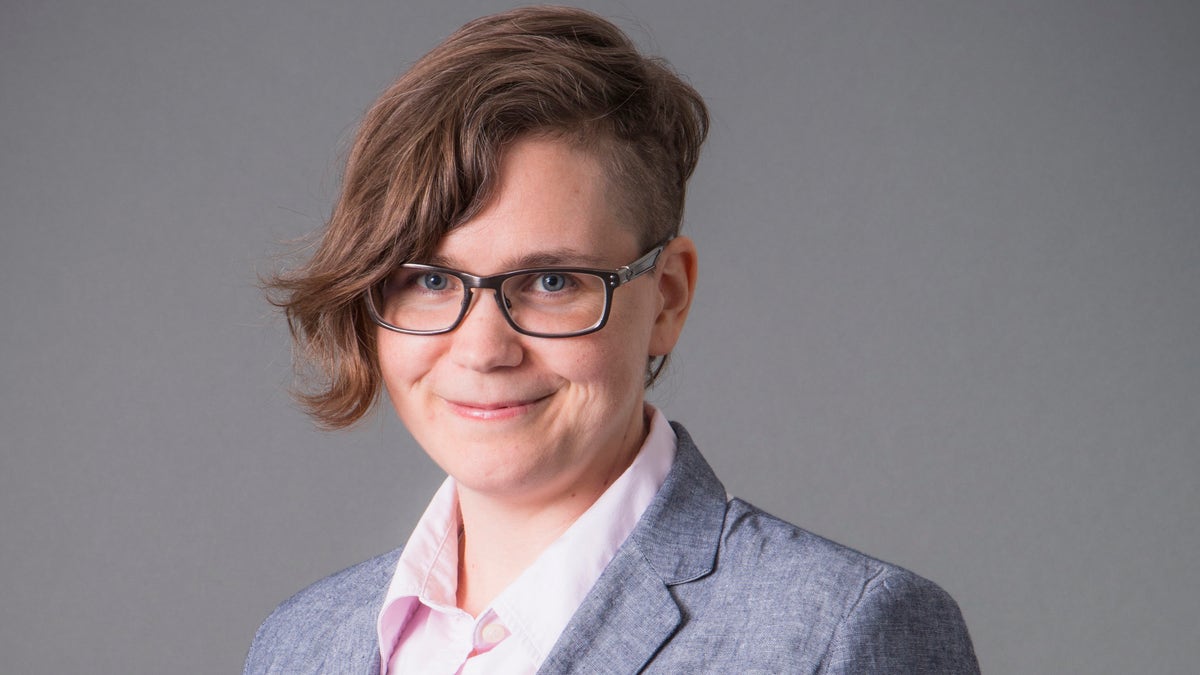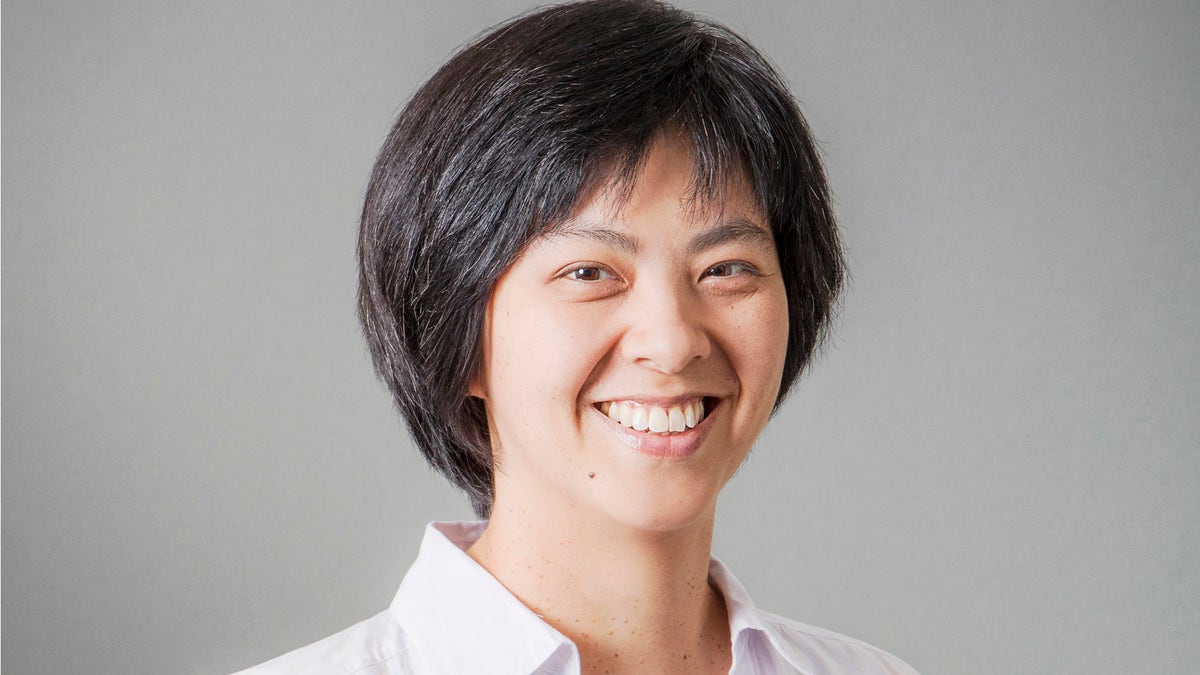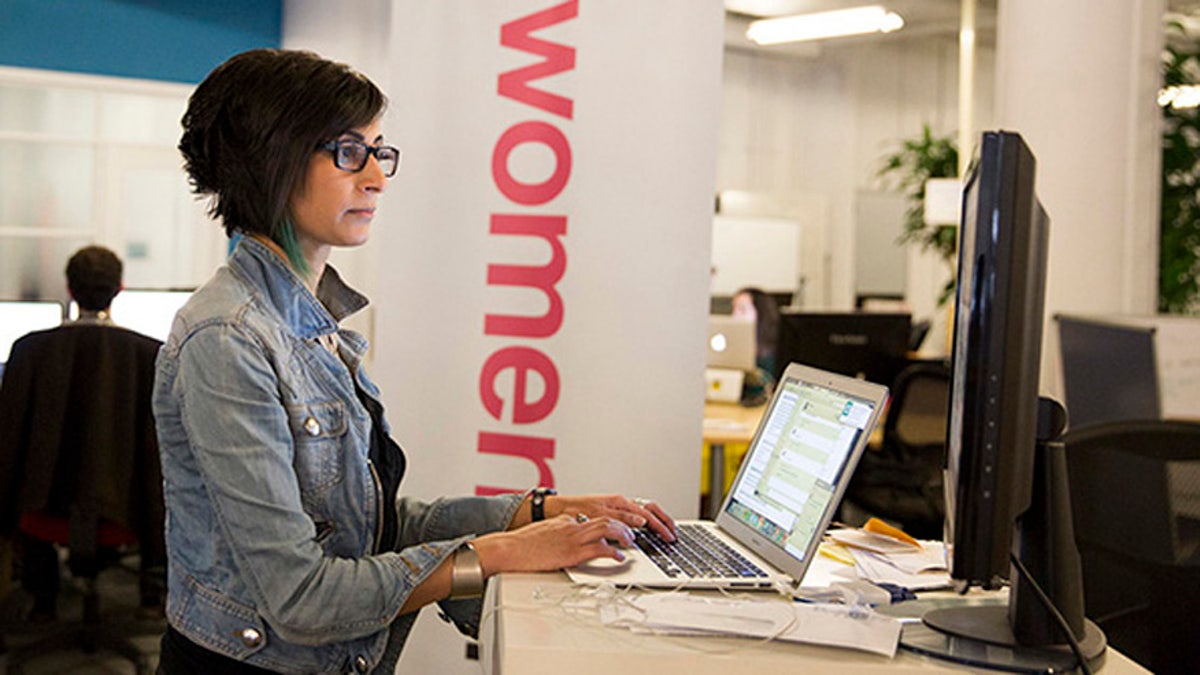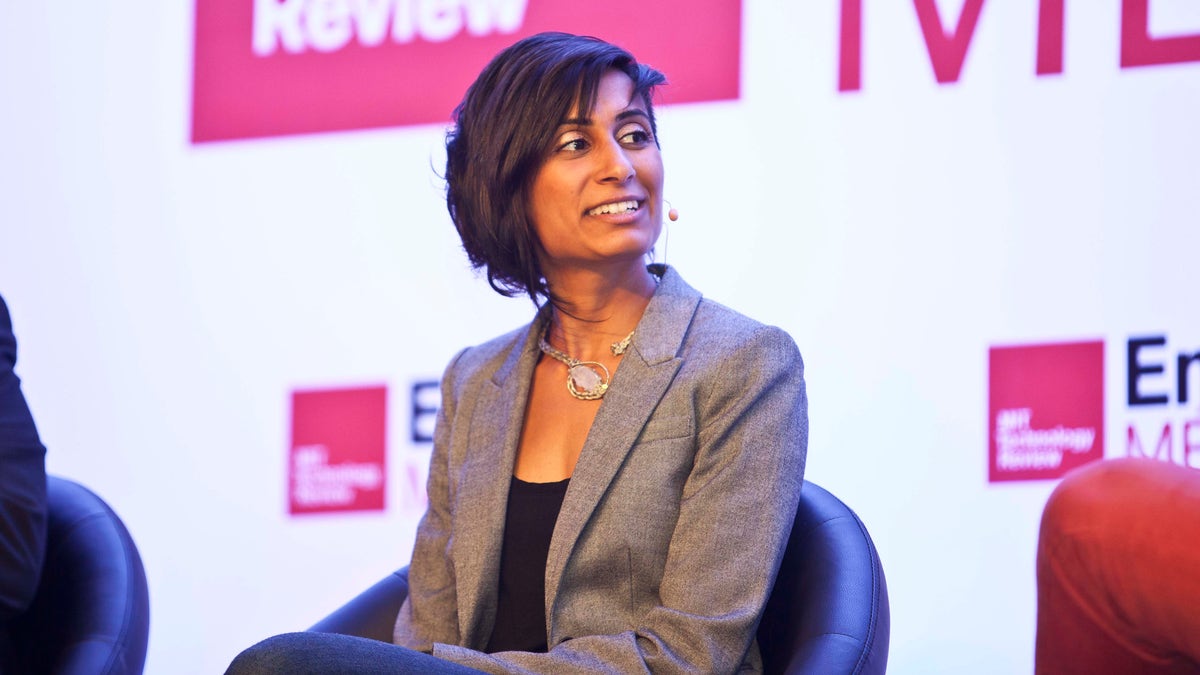
Veronica Eliasson, Assistant Professor of Aerospace and Mechanical Engineering at the Viterbi School of Engineering at the University of Southern California. (Copyrighted Will Taylor © 2014)
Back when she was growing up, Veronica Eliasson used to be rooted in front of her family’s television watching “MacGyver” with her younger brother. The long-running action-adventure series followed the exploits of an American secret agent who came up with inventive solutions to difficult problems by engineering tools out of everyday things. Think objects like duct tape, for instance. The show had worldwide appeal, and for the young Eliasson, whose father always told her she should become an engineer, it opened her eyes to the fact that science could be fun — and exciting.
“My dad was a huge source of inspiration to me, but whenever someone would say the word ‘engineer,’ it would sound boring to me,” Eliasson told FoxNews.com. “But then I started to get flyers from different universities and their engineering programs and the pictures totally fascinated me. There were ships and aircrafts and I realized ‘that’s what I wanted to do.’ ”
Flash forward a few decades and Eliasson is now an assistant professor of aerospace and mechanical engineering at the Viterbi School of Engineering at the University of Southern California. At USC, Eliasson said she has found herself in a mentorship role, teaching young engineers, many of them women. These students are entering a field that hasn’t always been hospitable to women, and Eliasson added that a lot could be improved if there were more public role models that made science accessible and fun. Figures a lot like, well, MacGyver.
Enter “The Next MacGyver,” a screenplay competition co-sponsored by the Viterbi School, The National Academy of Engineering, The MacGyver Foundation, and Lee Zlotoff, the creator of the original TV series. The competition aims to find the best proposal for a show that could bring a female protagonist to mainstream television who, like MacGyver, is an engineer using science-based solutions to overcome obstacles.
There were more than 1,800 entries worldwide. Entrants had to be at least 18 years old and sent in a script proposal by May 1. The next round will see 12 finalists notified by June 1, who then have to create a three-minute verbal pitch to the contest judges and draft a 10 to 15-page “show bible” that will illustrate the plot arc of the proposed show’s first season. These 12 finalists will present their work during a yet-to-be-announced capstone event over the summer, with five winners ultimately receiving $5,000 and the chance to work with two mentors – a Hollywood producer and an experienced engineer – who will help them hopefully make the show a reality.
The contest is ambitious in that it aims to tackle two huge problems – women are often underrepresented not just in science, technology, engineering, mathematics (STEM) education and careers but as headliners of action-adventure television shows and movies.
A joint 2012 study from the Geena Davis Institute on Gender and Media and the USC Annenberg School for Communications and Journalism found that in prime-time television programs, 78.9 percent of characters in STEM fields were male, while only 21.1 percent were female. The numbers aren’t very different for these characters’ real-life counterparts. A 2013 report from the National Science and Technology Council’s Committee on STEM Education found that while women make up the majority of undergraduate students and 46 percent of the workforce at large, “less than one in five” women receive bachelor’s degrees in STEM subjects and make up only 25 percent of STEM professionals.
Additionally, a 2011 study from the U.S. Department of Commerce found that “women with STEM degrees are less likely than their male counterparts to work in a STEM occupation.”
A major goal of The Next MacGyver competition is to increase these numbers, hopefully inspiring young girls to engage with STEM subjects in school after having grown up with a female engineer headlining a major action series.
For Dean of the USC Viterbi School Yannis C. Yortsos, media can be an effective conduit for change.
“Mass media presents us with stories and images that influence how we develop our basic beliefs about the world,” Yortsos wrote in an email to FoxNews.com. “There’s the notion out there that attracting more young women to STEM, particularly engineering, is done for the sake of diversity – like a political slogan. But the truth is, diversity is in our national self-interest. There’s nearly 320 million Americans. Slightly over half of them are women. How many new Facebooks, new patents, new inventions, new processes do we miss out on by ignoring half the talent pool? And not just that, as Apple’s famous credo suggested: ‘Think Different.’ It’s not just a numbers game – it’s a diversity of thought. Men and women think differently, and especially when it comes to new innovations, we can be grateful for that.”
Helping to spearhead the contest felt like a natural fit for the Viterbi School, Yortsos wrote. The school approached the National Academy of Engineering and Zlotoff back in 2013. Given that the school is located smack in the center of the United States’ entertainment capital, it felt like the natural institution to “enlist the medium of television to re-imagine engineers. What they look like, what they do and what they are capable of,” Yortsos added.

Ellis Meng is a Professor of biomedical and electrical engineering and chair of the Women in Science and Engineering program in the Viterbi School of Engineering. (Copyrighted Will Taylor© 2014)
Ellis Meng, a professor of biomedical and electrical engineering at USC, is the chair of the Women in Science and Engineering program at Viterbi. The program works to increase representation of women and “improve the overall program to allow them to succeed,” Meng told FoxNews.com.
Meng said that the types of programs she works on “run the gamut from undergraduate to faculty,” offering support and mentorship to undergrads, giving graduate students help like travel support and childcare support, and ensuring that female faculty members get the professional and personal support to allow them to thrive professionally. Meng said the school has made great strides since the program was first sponsored by an anonymous donor in 2000. At the time, Viterbi had only three women who were on the faculty. The school is “now northward of 25 faculty,” she said, a positive change, yes, but still a number that needs to increase.
“I think we have succeeded in changing the culture a little bit. There is a change in the mentality that people have at the university surrounding the hiring of women faculty,” Meng said. “The women we hired are absolutely excellent leaders in their field. The myth that you are somehow ‘lowering the bar’ has been completely debunked. We’re not just putting in a token female. We are bringing on the best in their fields.”
Meng added that one of the crucial benefits of seeing more women at the engineering school is to give young women mentors and role models. She said that she succeeded so much in her life through the help of a “number of mentors.”
“It’s important to have different perspectives and experiences represented on campus,” Meng suggested. “I strongly believe in being a mentor, offering advice — I strongly believe in giving back.”
While a lot of the strides Meng has seen have been gradual, a lot has improved since the tech boom at the turn of the century. Shaherose Charania, CEO and Founder of Women 2.0, a “media brand” designed to inspire and support women innovators in the tech industry, said that when she was a college student in the early 2000s, it was “exciting to see the connections, the social change, the business change” that the tech boom was bringing to society at large. What wasn’t as clear was how women could fit in to the equation.

Shaherose Charania, CEO and Founder of Women 2.0. (MIT Technology Review en Español)
Charania told FoxNews.com that she recalls taking a “Java 101” class in college. She was about one of only five girls in a class that included a lab portion. As she walked into the lab, located in a dark basement room, she said — jokingly — that “I walked in and its dark, its hot, it smelled like guys just hanging out there all day without their shoes on. It was just plain gross.”
While Charania said that she can laugh at the scenario now nearly two decades later, what stands out in her mind is the pervading culture that wasn’t necessarily welcoming or open to women. Charania ended up minoring in a technology degree rather than making that her major course of study.
“It was hard for me to make that connection of what it meant to be an engineer,” she said.
Charania, whose organization centers on the importance of providing mentorship and networking to female entrepreneurs in tech, said that the increase in women faculty on college campuses makes a huge difference in shrinking the gender gap in STEM.
“When the teacher or the T.A. looks like you, you just immediately think that ‘I could do that, too.’ In general, you always see people of the same gender, the same ethnicity, represented in certain fields. I fully agree that mentors are important, role models and teachers are important, media figures are important – they all contribute to this idea of ‘oh, I can do this. I will be able to do this.’ ”
“I remember seeing Steve Jobs and Bill Gates and thinking ‘okay, I’m not white, I’m not a dude, but they’re cool. I want to be something like that,’ ” she added.

Shaherose Charania (MIT Technology Review en Español)
This, of course, brings it all back to MacGyver. Charania said that she thinks a show with a tough, confident, and smart female engineer could have something of a “Buffy effect,” referencing the Joss Whedon’s cult favorite, “Buffy the Vampire Slayer,” which brought a female action lead to primetime TV in the late 1990s.
“Media is a great way to make a change in culture. At the end of the day, we are just a culture rooted in men being on top. It’s not just last year, 100s of years ago. This is in the science and finance industry, the medical industry — maybe the only one where there isn’t this disparity is education,” she said. “It’s Western culture, unfortunately.”
“The minute you see someone that looks like you, you don’t think you can’t anymore. I mean, it’s not just women. I’m sure men question themselves and say ‘can I?’ when they enter a filed like nursing or teaching,” Charania added. “It’s a natural human reaction when you are not in the majority. I really hope such a show comes along that can change these perceptions.”
For Yortsos, who oversees one of the nation’s premiere engineering schools, it is a societal necessity that as many perspectives as possible are represented in engineering.
“When it comes to the biggest problems of our age — energy, access to clean water, better medicines, fighting poverty, securing cyberspace, etc. – as well as enriching life, we need all the help we can get,” he wrote.
When asked if she would love to guest star on a female-led “MacGyver” show, Eliasson did not hesitate.
“Yes,” she said, excitedly.
On a more serious note, she added that there is nothing better than watching young people find something they are passionate about, mastering a skill, and then applying it in the real world.
“You have to find a job where you smile all the time,” she said. “I have the best job in the world. I get to hang out with or mentor young people all the time. I get to see them grow and stand on their own legs and ultimately land a super sweet job, and make an impact.”
